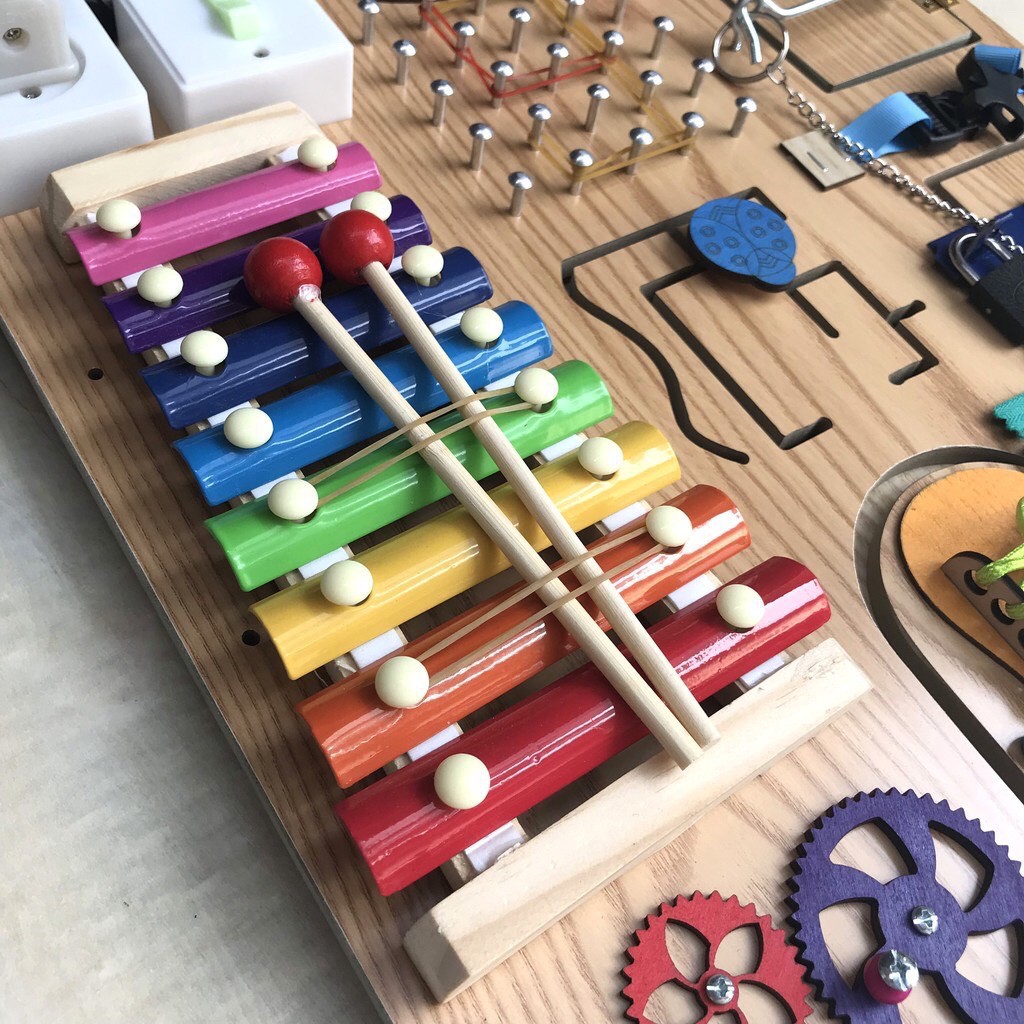Blog
Finding the Best Wood for Your Busy Board
Hey there, fellow DIY enthusiasts! If you’re diving into the wonderful world of busy boards—those fun and tactile boards that keep little hands busy and curious minds engaged—you’re probably wondering what the best wood is to use. After all, not all woods are created equal when it comes to crafting projects for kids, and we want to make sure we’re making the safest and most effective choices.
In this post, we’ll explore the best types of wood for busy boards, considering everything from durability to safety, and of course, aesthetics. So, grab your favorite beverage, get comfy, and let’s get into it!

What is a Busy Board?
First things first: let’s touch on what a busy board really is. Busy boards are interactive play boards filled with various elements that promote sensory play and fine motor skills. They often include latches, buttons, knobs, and other engaging objects that kids can manipulate. It’s a fantastic way for toddlers and preschoolers to explore their environment and satisfy their natural curiosity.
Now, when you’re building one of these masterpieces, the choice of wood is crucial. You want something durable, safe, and easy to work with. Here’s a breakdown of some of the best wood options for your upcoming busy board project.
>>>Read more: Unlock Your Child’s Motor Skills with a Fun Montessori Activity: Hammering
- Plywood: The All-Rounder
Plywood is often regarded as the go-to choice for busy boards, and for good reason. This material consists of multiple layers of wood veneer glued together, which makes it strong yet lightweight.

Pros:
- Durability: It holds up well against the wear and tear of little hands.
- Cost-Effective: Plywood is typically more affordable than solid wood, making it budget-friendly for DIY projects.
- Smooth Finish: With a little sanding, you can achieve a beautifully smooth surface, ready for paint or lacquer.
Cons:
- Quality Variability: Not all plywood is created equal. Opt for higher-grade plywood to avoid splinters and rough edges.
- Birch: The Beauty Spot
If you’re looking for something a bit nicer, birch wood is an excellent option. Its light color and fine grain give it an appealing look, perfect for a busy board that you want to be both functional and aesthetically pleasing.
Pros:
- Non-Toxic: Birch is a natural wood that is generally safe for children when properly finished.
- Easy to Work With: Birch is relatively soft, making it easy to cut, drill, and paint.
- Sturdy: It has good strength and is less likely to warp over time.
Cons:
- Price: It can be more expensive than standard plywood, so consider your budget when choosing this option.
- MDF (Medium-Density Fiberboard): The Versatile Choice
MDF is made from wood fibers compressed and bonded with resin, creating a dense board. It’s often used in a variety of woodworking projects, making it a versatile choice for busy boards.

Pros:
- Smooth Surface: It’s fantastic for intricate designs since it provides an incredibly smooth painting surface.
- Cost-Effective: Usually less expensive than solid woods like oak or maple.
- No Grain: The uniformity helps when aiming for a consistent finish.
Cons:
- Weight: MDF can be heavier than other wood types, which may not be ideal if you want a portable busy board.
- Durability: While it can withstand wear, it isn’t as durable as solid wood or plywood.
Tips for Choosing Your Wood
Now that we’ve gone through some of the best wood options for your busy board, here are a few tips to keep in mind while making your choice:
- Safety First: Make sure to use non-toxic finishes and sand any rough edges thoroughly to avoid splinters.
- Consider Compatibility: Think about the components you will attach to the board. Heavier items may need sturdier wood.
- Personal Style: Don’t forget to consider what kind of wood aesthetic complements your home decor or the room where the busy board will live.
Final Thoughts
Creating a busy board is a fantastic project that can provide endless hours of entertainment and learning for children. Choosing the right wood makes all the difference in terms of durability, safety, and aesthetics. Whether you go for the reliable plywood, the beauty of birch, or the charm of pine, what matters most is that your busy board sparks joy and encourages creativity.
So, grab your tools, unleash your inner craftsman or craftswoman, and get busy building a board that’s as fun to create as it is for the kiddos to play with! Happy crafting!
